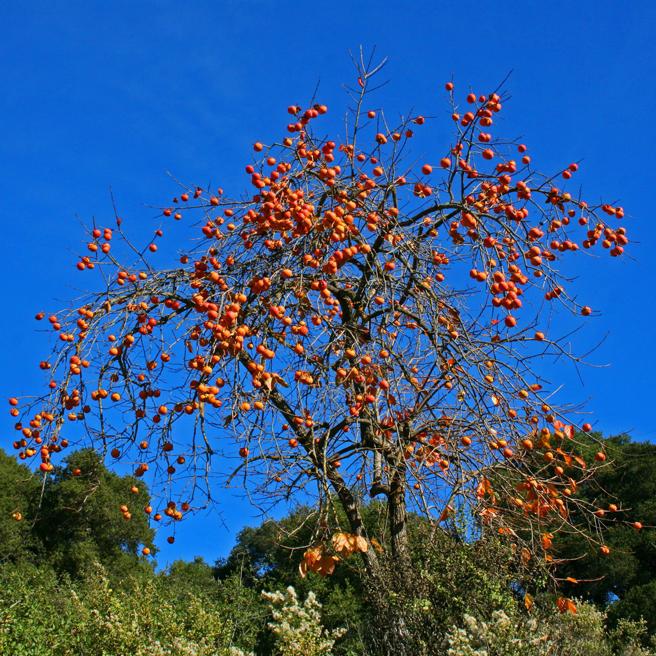Persimmon has recently appeared in our markets. But I liked it right away. The unusual consistency and amazing, incomparable taste of this fruit is gaining more and more fans. It contains vitamins A, C, D and P, a lot of trace elements, especially potassium, magnesium, iodine and iron, and is very useful for cores, with varicose veins, with anemia.
Like many orange fruits, persimmon is a powerful antioxidant and also inhibits the effects of
E. coli and
Staphylococcus aureus. This wonderful fruit has a number of useful properties. Residents of the middle lane know that they bring these fruits to our markets and shops from somewhere in the south, either from the Caucasus, or from Turkey. But few people saw where and how persimmon actually grows.
The birthplace of this tree is Indochina. There it is found in the wild in the mountains, at altitudes of up to 2.5 kilometers. It prefers light clay soils and grows best in those places where winters are not too cold (the tree tolerates frosts down to -18 ° C), and summers are not too hot. Persimmon was introduced into the culture on the territory of Manchuria, and already as a cultivated plant quickly spread throughout Southeast Asia right up to Indonesia and the Philippines. At the end of the 19th century, it falls into North America and Australia, and at the beginning of the 20th century - into the Mediterranean region, the Caucasus, Europe, South and Central America. In general, to see how persimmon grows, you need to go to the Caucasus or Turkey and Israel.

Persimmon tree is quite high, reaches 10 meters. Its large glossy leaves immediately reveal a southern origin. Trees are usually heterosexual, male and female, but bisexual are also found. Among them there are those that do not require pollination. On such trees, the fruits grow seedless. Persimmon blooms late, and also late, starting in October, its fruits ripen. Fruits abundantly. To mature fully, for example, in the conditions of the Caucasus, it does not have time and ripens when stored in room conditions. Everyone knows its bright fruits reach impressive sizes, up to 500 g, and are very sweet in taste. But in order for them to find their true consistency and sweetness, the fruits must be allowed to ripen. When ripe, they become brighter, unripe fruits have a duller shade and a strongly astringent taste. Although the well-known variety, colloquially called Korolek, is completely devoid of this astringent taste. In fact, this variety of Japanese origin is called Hiakume.
Almost every amateur gardener in our middle strip could not resist putting a bone of such yummy at home in the winter in a room pot, at least at home trying to see how persimmon actually grows, and maybe even get fruits. The first year, the tree grows very quickly, and the pots will have to be changed very often, because if the roots do not get a place for development, the tree will simply die.
But those who will make every effort and knowledge of agricultural technology, persimmons, the cultivation of which in room conditions is very problematic, in five years will surely give juicy and tasty fruits.
But science does not stand still. New varieties have been developed that, having a good taste, withstand frosts down to -20 ° C. And already in the Kuban and in the Rostov region, these varieties have been successfully grown. And some daredevils are trying to grow this southerner in the suburbs. So, to see how persimmon grows, soon you may not have to go south, but just go to a neighbor on his garden plot.